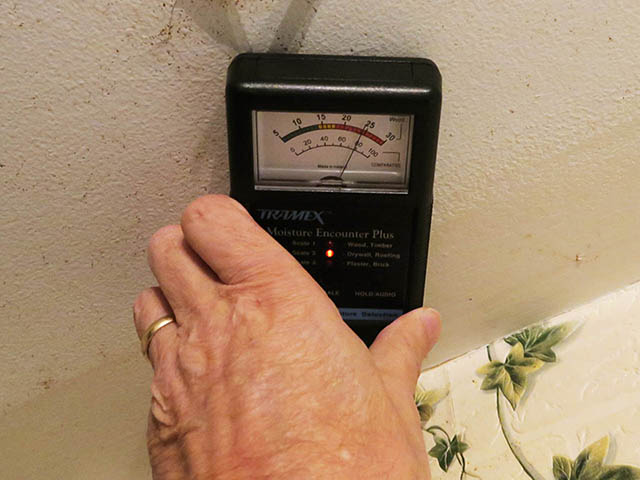Notes for Attics: The period between 2/1/2015 and 3/15/2016 had the worst ice-dams in recent history. If your attic didn’t have proper ventilation and your attic ceiling got wet from ice-dams you probably got mold growth on your attic ceiling. The mold usually looks whitish grey on the ceiling rafters and dark grey to black on the exterior ceiling sheathing. The mold usually starts growing on the north side lower attic sheathing and spreads from there. Mold growth from ice-dams and water damage is commonly covered by insurance, but not always. Mold growth caused from inadequate ventilation though is the most frequent cause of attic ceiling mold growth. You’ll need to call your insurance company and have them send out an adjuster to see if you’re covered.
Notes for Basements: If you ever had a water intrusion incident in your basement from either a heavy rain, water tank leak or from any other plumbing failure and the carpet or lower walls got wet even for 2 days, mold growth could already have developed. Also, the elevated humidity levels could of started mold growth on stored items and on the basement ceilings. This mold growth usually starts out looking just like a light gray dusty film.
Much of this mold growth is hidden on the backsides of the basement walls. When the basements finally dried, this mold growth didn’t die. The mold spores just became dorment. The spores still exist and are still viable. Many mold types will still produce mycotoxins for many years if not removed. Some spores can live for up to 10 years without moisture. If the walls get damp from high spring or summer humidity, or wet again from any of the heavy summer and fall downpours, the old mold spores will quickly start growing new mold.
A mold smell is often detected when the moisture rises high enough again for dorment mold spores to because active again and start reproducing. The smell often fades away again when the wall, and or, ceiling materials dry out again. Dorment mold spores still cause health problems, but the health problems from mold spores gets much worse when the humidity rises above 70%. This is when new mold growth occurs producing more mold spores and increased levels of mycotoxins.
4/1/2021 – Attic Ceiling Mold Update: Even though the the winter of 2020 – 2021 had little snow and was a little warmer than usual many homes with limited attic ventilation still got attic ceiling mold. We saw many cases of a light colored mold on rafters in attics and many more with black attic mold growth on the exterior attic sheathing. There are many types of black mold growth in attics.
Note: Out of the 60 types of mold growth we test for, the most commonly found mold species we find growing on attic ceilings are aspergillus, penicillium and cladosporium.


